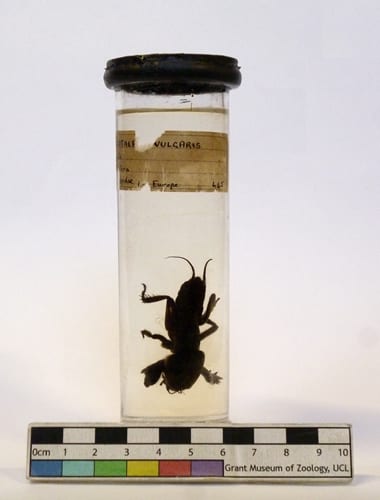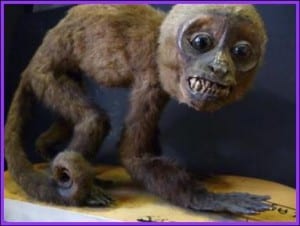 To join our six lovely postcards on sale here at the Grant Museum, we’ve recently gone digital with our series of 16 new free Grant Museum e-cards. The e-card images show the variety of specimens the Grant Museum collection comprises, highlighting some of our most prized specimens including the Negus collection of bisected heads and our Blaschka glass models of invertebrates.
To join our six lovely postcards on sale here at the Grant Museum, we’ve recently gone digital with our series of 16 new free Grant Museum e-cards. The e-card images show the variety of specimens the Grant Museum collection comprises, highlighting some of our most prized specimens including the Negus collection of bisected heads and our Blaschka glass models of invertebrates.
If you’ve not already guessed, yes, the jar of moles have their own e-card too.
Once users have selected their e-card image, they are invited to choose an interesting fact about the object to share with the recipient. Each object offers a selection from three facts relating to the natural history of the object, or the significance of the object to the Museum. For example, the quagga skeleton, which is only one of seven quagga skeletons in existence, was originally thought to be a plains zebra until it was re-identified as a quagga in 1972.
We hope to add to our range of e-cards and our postcards available in the Museum, so keep an eye out. If you’ve got a specimen you’d like to see as a postcard or e-card, please let us know.
 Close
Close








 There comes a time in everybody’s life when something inevitable happens. Be it a first kiss, suffering a horrible job interview, or making a fool of yourself at the Christmas party. Today, for me, is that day. There are a lot of ‘high profile specimens’ at the Grant Museum that are labelled with this level of importance and acquire the oodles of subsequent respect because they are scientifically important, like the quagga, or gosh darn impressive, like the walrus penis bone. But then, there are specimens, or rather *a* specimen, that is seemingly the object of everybody’s eye, the cream in everyone’s coffee, the Bella to everyone’s Edward (or Jacob, if you will). A day when we, as staff, go through an entire day without hearing this particular set of three short words is a day when we are closed for refurbishment and the builders are having a snow day. It seems therefore, that it was nothing short of inevitable that at some point or another, this specimen would feature in a Specimen of the Week. You (must) know them… you (apparently) love them… this week’s Specimen of the Week is…
There comes a time in everybody’s life when something inevitable happens. Be it a first kiss, suffering a horrible job interview, or making a fool of yourself at the Christmas party. Today, for me, is that day. There are a lot of ‘high profile specimens’ at the Grant Museum that are labelled with this level of importance and acquire the oodles of subsequent respect because they are scientifically important, like the quagga, or gosh darn impressive, like the walrus penis bone. But then, there are specimens, or rather *a* specimen, that is seemingly the object of everybody’s eye, the cream in everyone’s coffee, the Bella to everyone’s Edward (or Jacob, if you will). A day when we, as staff, go through an entire day without hearing this particular set of three short words is a day when we are closed for refurbishment and the builders are having a snow day. It seems therefore, that it was nothing short of inevitable that at some point or another, this specimen would feature in a Specimen of the Week. You (must) know them… you (apparently) love them… this week’s Specimen of the Week is…